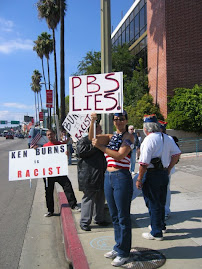Over 150 people spoke on Sunday, October 13, at Camino Del Sol Park in Oxnard, some serenely and others with strong demands for justice, in observance of the one year anniversary of the police killing of Alfonso Limon Jr. As I observed the Limon family distribute t-shirts before the event with the image of Alfonso on the front and the names of nine Oxnard Police Department officers on the back, a woman approached me to ask I was Professor Barajas. I said I was. She informed me that her name was Rebecca Limon, the sister of Alfonso, and that she was a student of mine at California State University Channel Islands.
Rebecca expressed interest in my presence. I said that as a historian I periodically document the actions of the Chicano community by writing op-ed essays to situate current events within in a historical frame. I then asked if her family considered a request to the California Office of the Attorney General to investigate the killing of her brother. With grace Rebecca explained that the process first entailed an investigation from the Ventura County Sheriff’s Department and an inquiry by Ventura County District Attorney’s Office.
Meanwhile, the Limon family will continue to seek answers and the timely prosecution of justice.
Rebecca’s sisters echoed this message in a circle of unity before the commencement of a peaceful protest march through the streets of La Colonia and Oxnard Boulevard.
As I listened to the words of the Limon family and members of Todo Poder Al Pueblo and observed a prayer service conducted by Aztec dancers, I panned the audience of community elders, youth, college professors, parents, infants in strollers, and students and alumni of my institution, CSU Channel Islands. Their presence mirrored moments of the recent and not so distant past when the Mexican community of Ventura County protested the perceived and real oppressive actions of law enforcement.
For example, in 1900 leaders of the Mexican community summoned the Mexican consul in Los Angeles to investigate the fiery death of two Mexican nationals in an Oxnard jail. Forty-five years later, the Mexican community of Oxnard protested the police use of batons and tear gas to break up a peaceful outdoor celebration along the boulevard.
When Police Chief George Pryor was confronted by members of the community he responded, “The tear gas wasn’t much good, anyway. . . We had it for a long time, and it gets weaker as it gets older. Why, it didn’t make’em cry very much. . . .”
In 1956, the OPD again fired tear gas as they stormed a crowd that enjoyed the festivities of a Cristo Rey Church bazaar in La Colonia after a reported disturbance. Tony Del Buono, Vera Gonzales, John Soria, and other activists formed the Oxnard Civic Improvement Association to collectively protest such abuse of power. Two years later in 1958, the OCIA converted itself to the Community Service Organization of Ventura County with Cesar E. Chavez as its director. A central concern of the CSO was police brutality.
Police relations in La Colonia had become strained to the point that many residents, particularly its youth, viewed law enforcement as not their protectors but as an agency that violated their rights with impunity. This expressed itself in 1958 when police officers responded to a boy being struck by a car in La Colonia. As they arrived at the scene, they found themselves pelted by rocks and bottles launched by neighborhood youths.
In my research of the Chicano Movement in Ventura County, long-time civically engaged citizens have shared stories how the police stopped African American and Mexican origin residents that dared to venture into white neighborhoods. In April of 1972 Mexican origin youth demonstrated against this sort of harassment by the Santa Paula Police. One Santa Paula police officer in particular was infamous for pulling over Chicanos who cruised the town to throw their car keys into an adjacent orchard.
It is this history and similar contemporary experiences generally not reported in the media that is absent from the public’s mind when considering peaceful yet militant demonstrations such at those organized by Todo Poder and the families who have lost loved ones to police violence.
As heartbreaking as the killing of Alfonso is, the Limon family is patient and determined to obtain answers to why and how he died at the hands of Oxnard Police Department. With the support of people in Ventura County and many others outside the area, they will wait for the legal process of justice to take its course.
Con Safos
fpb
A version of this post was published in the Ventura County Star.
Thursday, October 17, 2013
Subscribe to:
Post Comments (Atom)



No comments:
Post a Comment